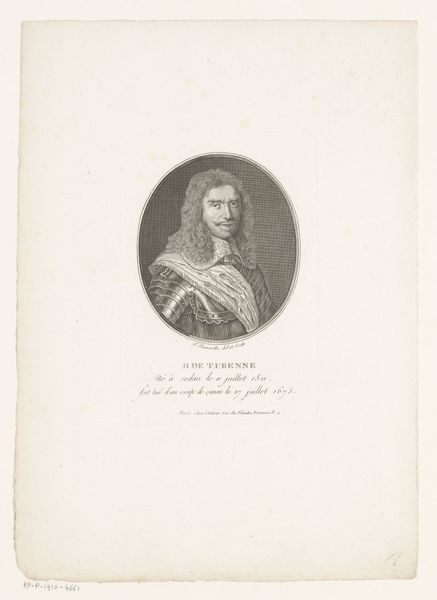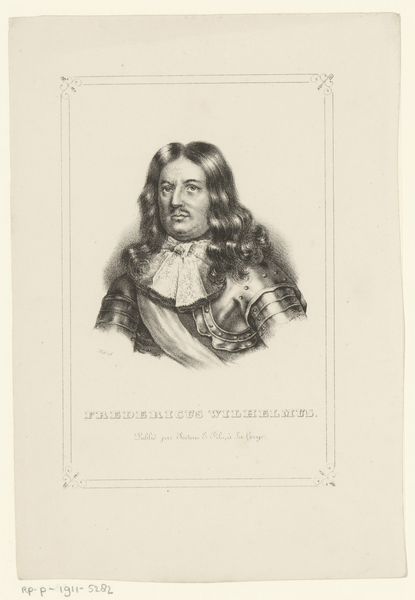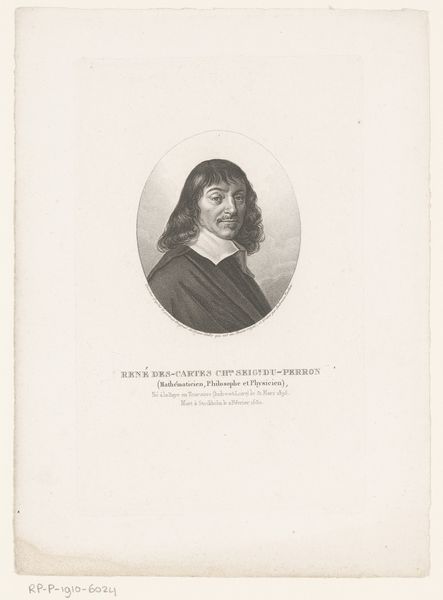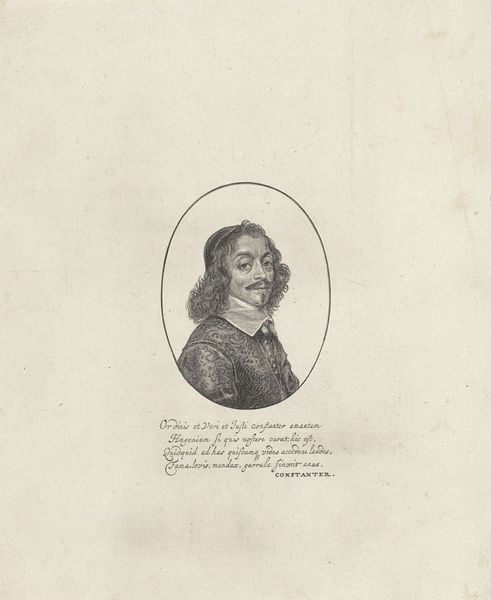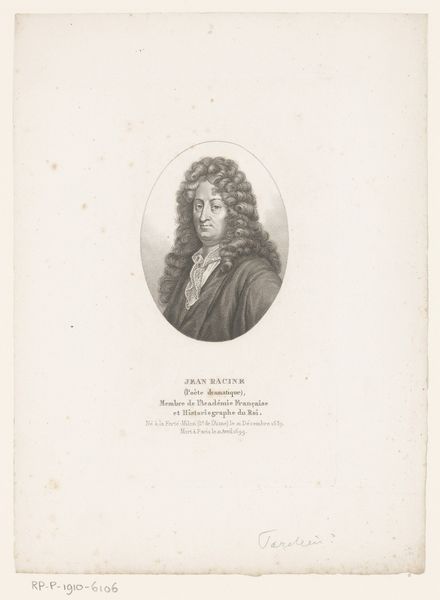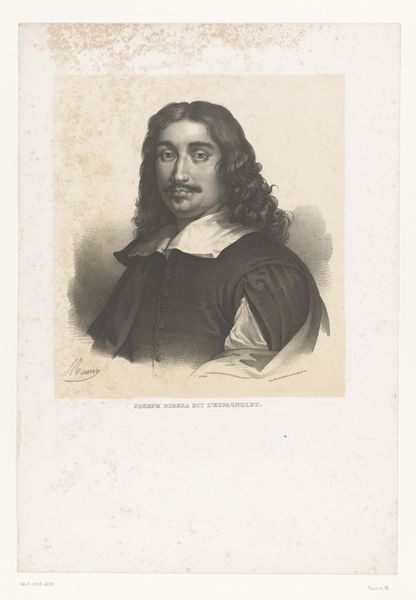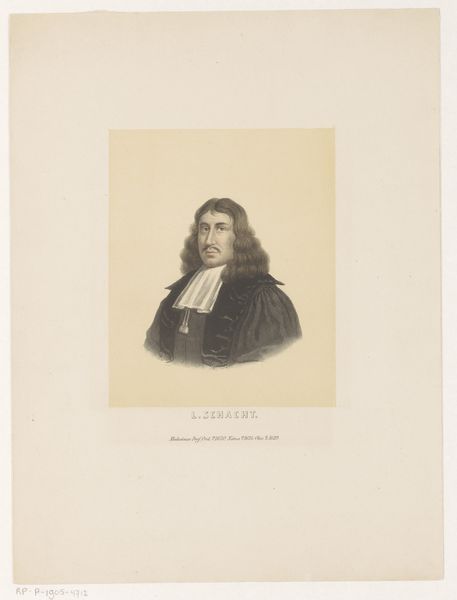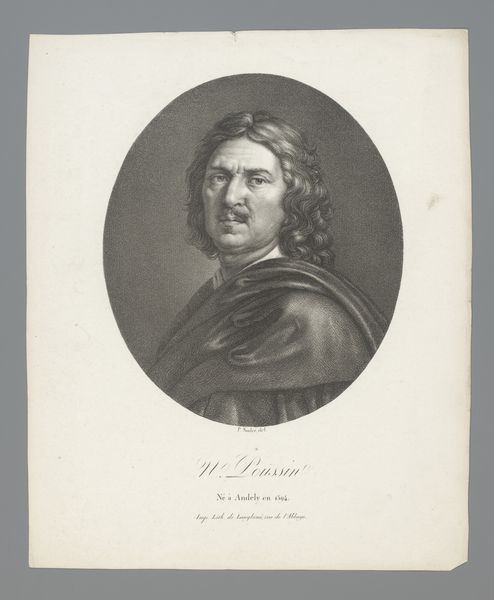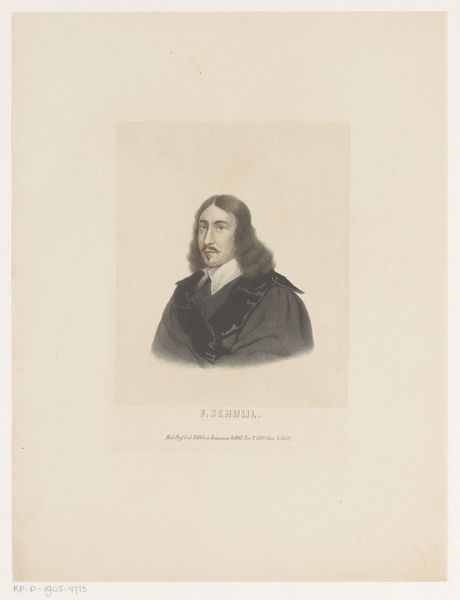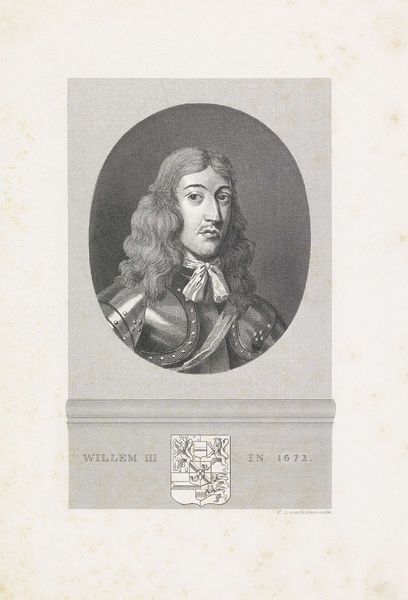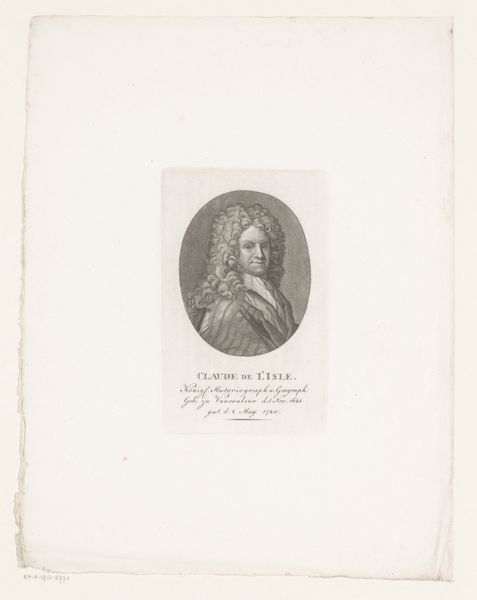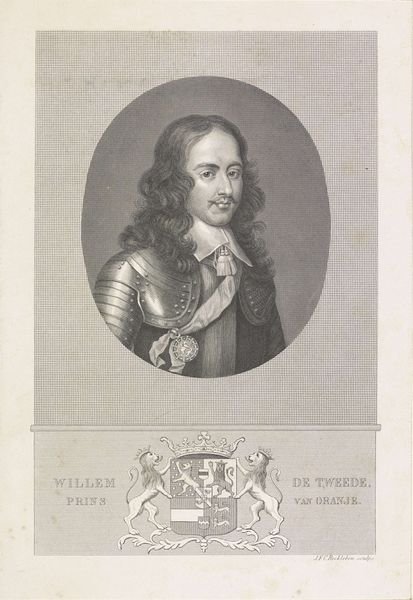
Dimensions: height 229 mm, width 153 mm
Copyright: Rijks Museum: Open Domain
Curator: Here we have "Portret van Michel le Tellier," an engraving dating from the period of 1825 to 1845. Editor: The precision of line is really quite striking; there’s almost an ethereal quality to this gentleman's presence. A little melancholy, perhaps? Curator: The success here really stems from the use of contrast and line to achieve texture and tone. Observe the expert cross-hatching—it provides depth without needing a full tonal range. Note especially how it captures the formality of the man's attire. Editor: Yes, but it’s that very formality which intrigues me. Michel le Tellier was, after all, a powerful figure—Louis XIV’s war minister. This portrait, rendered well after his death, evokes the rigid hierarchies of the French court and the societal structures of the time. It raises questions about how power is constructed and memorialized. Curator: Precisely! The structure of power becomes legible in its pictorial construction through established conventions. The baroque sensibility lingers through the formal treatment but is subdued through print-making’s necessary reduction to essential elements of line and tone. Editor: Reduction, yes, but not neutral. By revisiting a baroque-era subject during the first half of the nineteenth century, we're reminded of the lasting legacies of absolutism and its echoes within contemporary political discourse. It suggests a careful crafting of identity and reputation, ideas that very much carry across the centuries into today's politics. Curator: It's fascinating to think of this piece less as a mere record and more as a crafted demonstration of skill within the print medium. This becomes especially evident by observing the delicate gradations in the rendering of the face. It calls to mind the skill involved to capture detail via print. Editor: The artistry is indeed undeniable, but I can't help viewing even formal skill within social parameters. How were such skills historically fostered and deployed, and what systems of patronage or political endorsement allowed them to flourish? Considering such issues brings this man out of the artwork and connects the image to broader power systems and political issues in past and present France. Curator: A perspective with resonance, even if it's a perspective often less focused on formal aspects than broader contextual consideration. Editor: And likewise with yours, an articulation on craft that brings great depth, that one might forget by focusing only on historical significance.
Comments
No comments
Be the first to comment and join the conversation on the ultimate creative platform.
